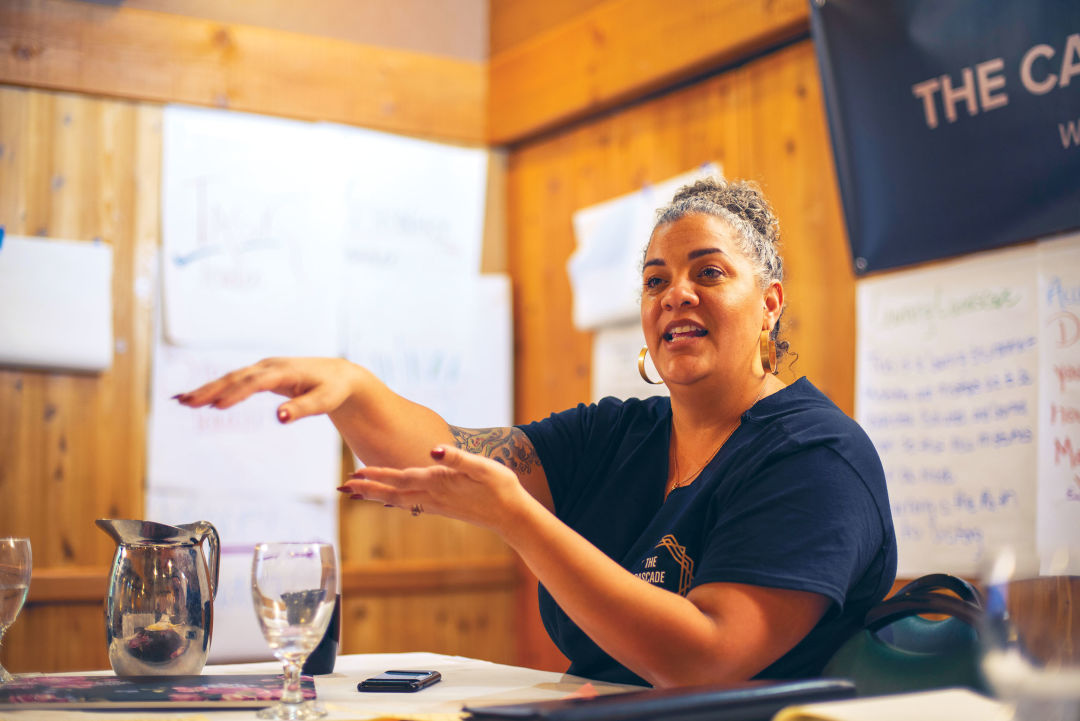Oregon Isn’t Taking This Year’s Census Lying Down

Esperanza Tervalon-Garrett, Oregon’s census-taker in chief
Image: COURTESY WE COUNT OREGON
It’s not hard to count the number of queer, Afro-Puerto Rican former Obama staffers living with their partners and 13-year-old sons on sprawling ranches outside of Ashland: Esperanza Tervalon-Garrett is pretty much it.
But counting up everyone else in Oregon, including those who are terrified of being deported by the federal government?
That’s both a big ask and Tervalon-Garrett’s current gig, as the head of the all-female, black, Latinx, and indigenous crew behind We Count Oregon, a public- and private-funded campaign to ensure all Oregonians fill out their US census form when the constitutionally mandated, once-a-decade count of all 327 or so million people living in this country begins in the spring.
In Oregon, the 2020 census means a potential sixth congressional seat, as well as billions of dollars in federal aid to pay for schools, roads, and social services. And it comes amid the Trump administration’s clear signals that undocumented immigrants participate only at their peril—the White House fought for the right to put a citizenship question on the census, all the way to the Supreme Court, before giving up.
The We Count Oregon team is armed with $9.5 million, plans to raise another half-million, and partnerships with a laundry list of nonprofits that have strong ties to hard-to-count communities.
This is the first time Oregon has spent state dollars on the census, says Aldo Solano, Gov. Kate Brown’s brand-new census project manager. The legislature earmarked $7.5 million for the hard-to-count outreach efforts, and the other $2 million and counting comes from philanthropic and private donations.
“We only get one shot at this,” Solano says. “There’s a lot at stake.” And, at least this year, there’s not a lot of trust the federal government will get the job done on its own.
With their partners, We Count Oregon’s goal is to hire nearly 300 people within the next month, at $17 an hour, and train them in the fine art of GOTC—getting out the count—reaching 200,000 people at their door, by text, or by phone. Those paid workers, in turn, will look to train 10,000 volunteers overall, to be ready for the census forms sent to households starting in mid-March.
Their door-knockers will be looking for the renters, the immigrants, the people of color, the non-English speakers, children under the age of 6—the ones, in other words, who often need government services the most, but are least likely to be counted. Every person We Count Oregon can get to fill out the form means at least an extra $3,200 per year in federal funding for the state—every year for the next 10 years.
“Participation in this process—that some wanted our brothers and sisters to sit out of—is an opportunity to participate in democracy the way it is supposed to be. We won’t be intimidated,” says Tervalon-Garrett.
It’s not the kind of statewide effort that’s usually spearheaded from Southern Oregon. And it’s unusual, in our insular state, for a relative newcomer to be handed this much responsibility. After a stint as Barack Obama’s Northern California field director in 2007, Tervalon-Garrett became the founding executive director of Oakland Rising, a progressive advocacy nonprofit that ran a census turnout effort in 2010, resulting in a 16 percent increase in citywide response rates from the 2000 census.
Burned out and seeking a quieter place to raise their son, Tervalon-Garrett and her partner, Christine, headed north in 2017, intending to settle in Eugene. At a pit stop in Ashland, they fell in love with the landscape. Now they own a 16-acre organic ranch there, growing everything from hops to heirloom tomatoes and practicing subsistence living, with space for horses to roam.
But the chance to run Oregon’s hard-to-count census outreach was too big to pass up, Tervalon-Garrett says. In the last census, the state missed qualifying for another congressperson by just 45,000 people—since then, Oregon has added an estimated 450,000 new residents, according to the Population Research Center at Portland State University.
Charles Rynerson, the interim director of the PSU center, says he’s cautiously optimistic the unprecedented effort and money Oregon is putting into reaching communities will pay off.
“People are more likely to understand what is at stake if they hear it from someone they know, rather than just the government,” he says. “It’s so important for trusted voices to get out the message.”




